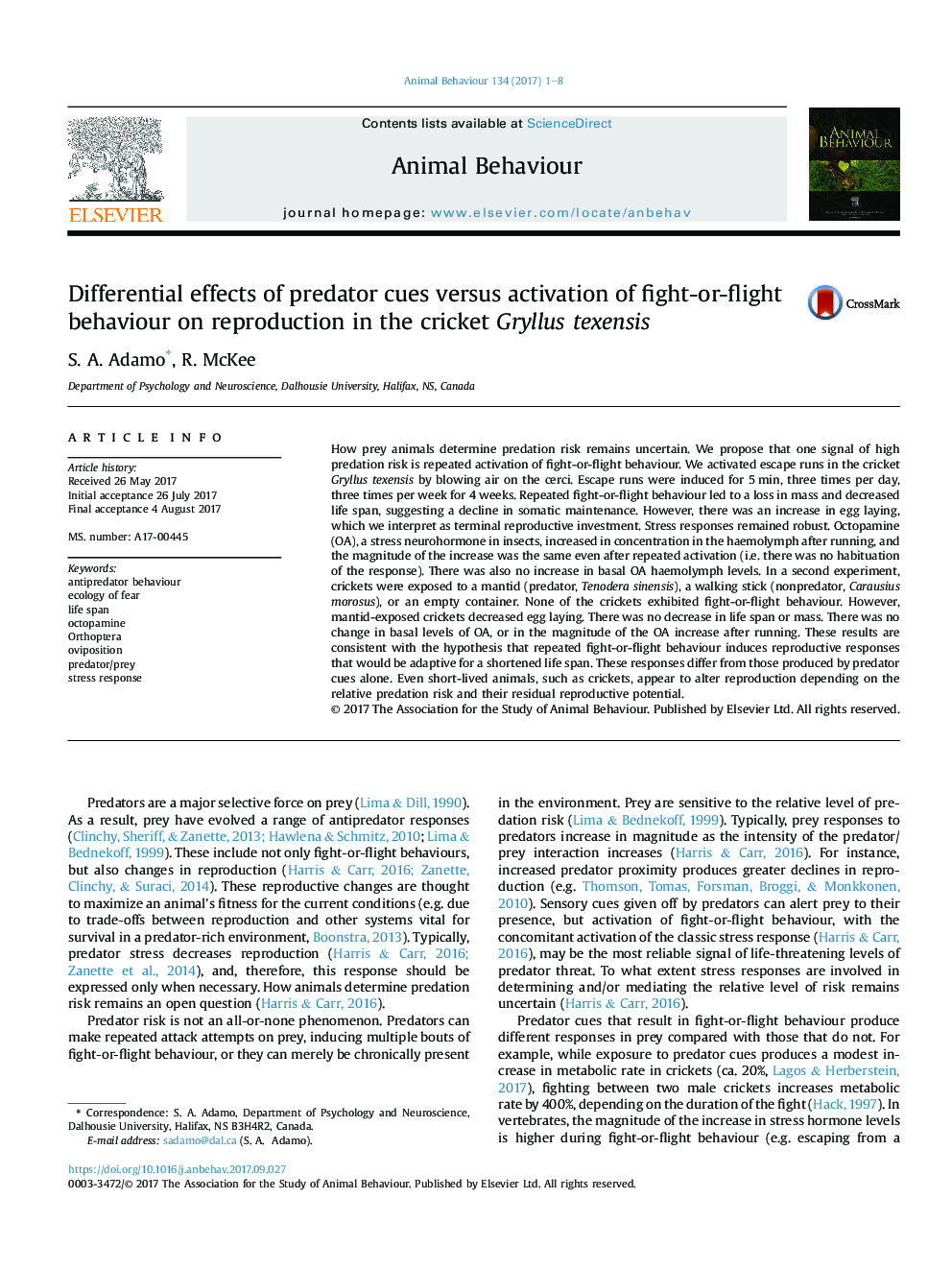| کد مقاله | کد نشریه | سال انتشار | مقاله انگلیسی | نسخه تمام متن |
|---|---|---|---|---|
| 8488760 | 1552194 | 2017 | 8 صفحه PDF | دانلود رایگان |
عنوان انگلیسی مقاله ISI
Differential effects of predator cues versus activation of fight-or-flight behaviour on reproduction in the cricket Gryllus texensis
دانلود مقاله + سفارش ترجمه
دانلود مقاله ISI انگلیسی
رایگان برای ایرانیان
کلمات کلیدی
موضوعات مرتبط
علوم زیستی و بیوفناوری
علوم کشاورزی و بیولوژیک
علوم دامی و جانورشناسی
پیش نمایش صفحه اول مقاله

چکیده انگلیسی
How prey animals determine predation risk remains uncertain. We propose that one signal of high predation risk is repeated activation of fight-or-flight behaviour. We activated escape runs in the cricket Gryllus texensis by blowing air on the cerci. Escape runs were induced for 5Â min, three times per day, three times per week for 4 weeks. Repeated fight-or-flight behaviour led to a loss in mass and decreased life span, suggesting a decline in somatic maintenance. However, there was an increase in egg laying, which we interpret as terminal reproductive investment. Stress responses remained robust. Octopamine (OA), a stress neurohormone in insects, increased in concentration in the haemolymph after running, and the magnitude of the increase was the same even after repeated activation (i.e. there was no habituation of the response). There was also no increase in basal OA haemolymph levels. In a second experiment, crickets were exposed to a mantid (predator, Tenodera sinensis), a walking stick (nonpredator, Carausius morosus), or an empty container. None of the crickets exhibited fight-or-flight behaviour. However, mantid-exposed crickets decreased egg laying. There was no decrease in life span or mass. There was no change in basal levels of OA, or in the magnitude of the OA increase after running. These results are consistent with the hypothesis that repeated fight-or-flight behaviour induces reproductive responses that would be adaptive for a shortened life span. These responses differ from those produced by predator cues alone. Even short-lived animals, such as crickets, appear to alter reproduction depending on the relative predation risk and their residual reproductive potential.
ناشر
Database: Elsevier - ScienceDirect (ساینس دایرکت)
Journal: Animal Behaviour - Volume 134, December 2017, Pages 1-8
Journal: Animal Behaviour - Volume 134, December 2017, Pages 1-8
نویسندگان
S.A. Adamo, R. McKee,